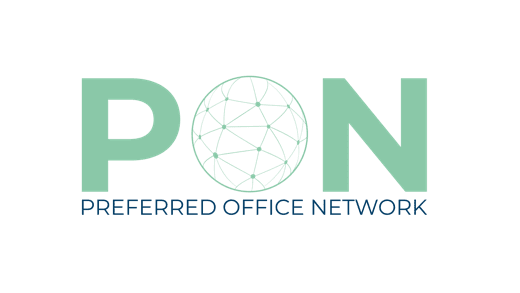
The Q1 Jobs Reports Review: Examining the 2023 Economic and Employment Outlook
As we have for the past year, our team has been closely analyzing the monthly jobs reports disseminated by the U.S. Bureau of Labor Statistics. And, now that we have made it through Q1 2023, we can begin to formulate some thoughts about how this year’s economic and employment outlook is shaping up.
Much like our assessment of the Q4 2022 jobs reports, the point of view is largely a matter of interpretation: The job market is stronger today than it was in February 2020. Hiring remains hot. Unemployment is low as workers return full force post pandemic.
However, news of high-profile layoffs understandably have many workers uneasy. And no one is quite sure what the Federal Reserve’s next move is regarding raising interest rates to rein in inflation. To add to this volatility, the January 2023 jobs report stunned experts with its monumental growth, sending off alarm bells among some economic experts. However, the data began to level off in February and March … and that’s decidedly a good thing.
Preferred Office Network follows these economic and employment fluctuations closely to help companies make informed decisions regarding how to configure their workplaces in today’s current climate. Here, we take a look at the top takeaways of the Q1 2023 jobs reports and what these trends mean for the current labor market as well as the bigger picture shaping the future of work.
What the Last Three Months of Jobs Data Reveal
The aforementioned January jobs report startled many economists with a gain of 517,000 jobs, crushing the market estimate of 187,000. While undoubtedly a positive development for a rebounding economy, a continuously red-hot labor market concerns policymakers at the Federal Reserve (and their response is often to raise interest rates to try to bring things back into balance).
February and March’s reports have since demonstrated that desired hiring drop off, with job creation more in line with economists’ expectations (311,000 and 236,000 jobs added per month, respectively). The labor force participation rate (the number of available workers actively employed or seeking a job) increased to pre-pandemic levels. And, job openings also fell to their lowest levels since May 2021, meaning that, while the labor market remains resilient, the hiring frenzy that drove the Great Resignation is now stabilizing.
A labor market that can remain solid while also staying within projections is a positive sign that things are moving in the right direction, easing recession fears by bringing down the inflation caused by wage wars and higher consumer prices. We’re seeing the effects of some much-needed normalcy after several years of upheaval brought about by a global pandemic.
From the perspective of the Federal Reserve, which is seeking enhanced job seeker participation, better alignment between open positions and available workers, and tempered levels of wage growth to slow down the inflation brought about by the rapid reopening of the global economy, more steady ground can potentially mean a softer landing.
Which Industries Are Demonstrating the Most Growth?
As people look to restore their pre-pandemic lifestyles, returning to workplaces, travel, and leisure activities, the economic outlook is brightened, the markets stabilize, consumer confidence is bolstered, and companies can continue to hire to keep up with demand.
Throughout Q1, employment continued to trend up in many industries that Preferred serves, including leisure and hospitality, government, professional and business services, and healthcare. These supersectors continue to grow as our appetite for experiences as well as a demand for services reemerge even in spite of a cooling economy.
In addition, as supply chain issues get ironed out, the manufacturing, production, and shipping sectors are soaring, not only in the U.S., but worldwide. And as the role of technology transforms our workplaces, including the rise of artificial intelligence and other forms of automation, jobs in those fields are also highly competitive.
Finally, while not a specific industry, big corporations with more than 5,000 employees are likely to continue to experience job growth because they have the money and the manpower to weather economic swings, as well as the time-tested strategies for keeping people employed.
Where Do We Go From Here?
Since 2020, we’ve dealt with the dual challenges of rebuilding our economy while rethinking the very notion of how we view the workplace in our next normal.
As the return-to-the-office debate rages on, employers are increasingly realizing that today’s workers want the flexibility and freedom to work where and when they want — in fact, that adaptability has proven to be among the top reasons for determining if an employee stays at their company.
A recent survey by talent acquisition software company Jobvite reveals that 45% of workers seeking new opportunities are on the hunt because they want greater work flexibility, including enhanced remote work opportunities. Meanwhile, an even number (24%) of workers prefer working 100% remotely as well as in 50/50 remote/in-office hybrid arrangements.
Flexible workspaces play an important role in solving for this ongoing shift in how people want to work and how employers can meet the needs of an evolving workforce. Keeping employees engaged helps organizations stay competitive, innovative, and productive, helping to insulate the economy from future challenges.
A Look at Q2 2023 and Beyond
We fully expect the outlook to remain uncertain as we continue to revitalize our economy and reimagine our workplaces. The most successful companies will not only survive but thrive in this climate with intentional approaches and progressive solutions for attracting and retaining talent, staying resilient and relevant, and leading the conversation about the future of work.
We’re already tracking the economic and employment developments of Q2 2023 to bring our clients more insights on hiring and human resources as we move through the year. We are committed to supporting your business by providing an array of workplace solutions to meet your organization’s needs in this age of transformation.
